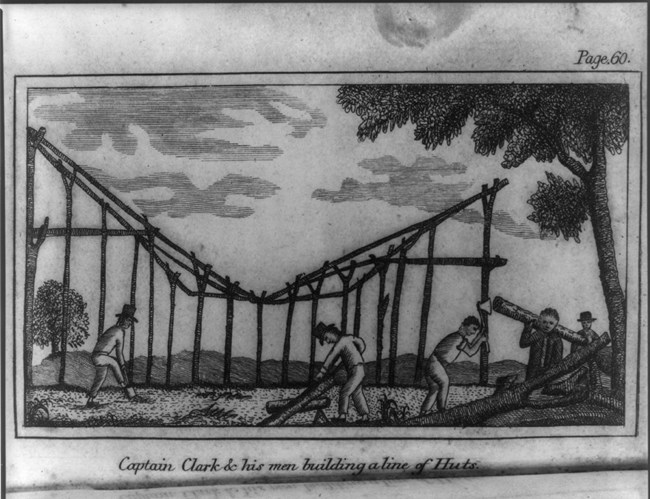Last updated: September 5, 2023
Article
Life at Camp Dubois

Library of Congress Printed and Photographs Division
William Clark and Meriwether Lewis spent the winter of 1803–1804 making final preparations for their expedition. Over the winter, they recruited more than two dozen additional men to the party. Clark stayed at Camp Dubois to train the men, while Lewis traveled around the region seeking information about the territory of the Upper Missouri.
What was life like at Camp Dubois? They spent the first few cold, winter weeks clearing land and constructing huts. With shelter in place, they began to prepare the boats, tools, and provisions needed for their journey. Men went out on hunting parties, bringing back turkeys, deer, and other animals to feed the crew. They also smoked, jerked, and dried meat for the trip—jerky would last much longer than fresh meat. A local woman offered to wash their clothes, for a fee, and they constructed a laundry structure for her. Sometimes the men drank too much.
Clark assigned special tasks to recruits with especially valuable skills, such as blacksmithing and carpentry. Men repaired guns and tools, as well as made sure the boats were water ready. Tapping trees for syrup to make into sugar was another task. Men assigned to such tasks received an extra ration of whiskey and an exemption from guard duty.
Because this was a military expedition, Clark conducted frequent firearms drills and marksmanship training. The men also practiced operating and maneuvering the keelboat and two pirogues they would take upriver.
Indigenous, French, and American river travelers often stopped at the camp to trade goods and information. On Christmas Day 1803, some visitors from a nearby Indigenous village came by to celebrate the holiday with the American, French, and Métis men spending the winter at the camp.
About this article: This article is part of series called “Pivotal Places: Stories from the Lewis and Clark National Historic Trail.”
